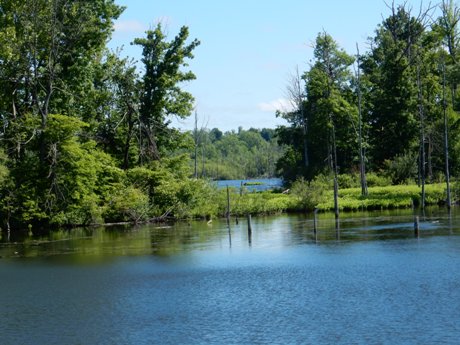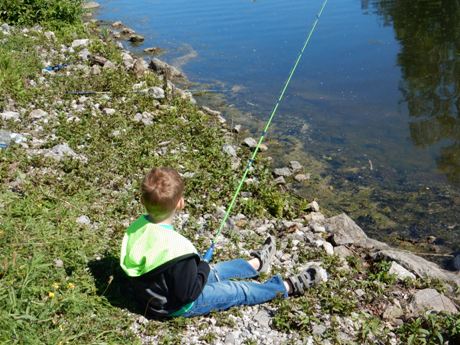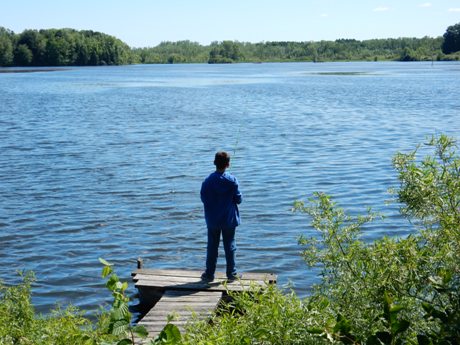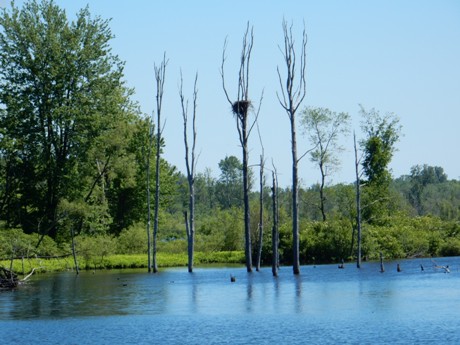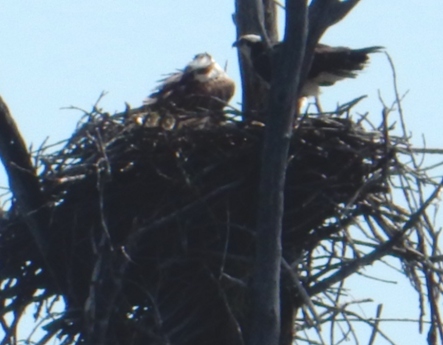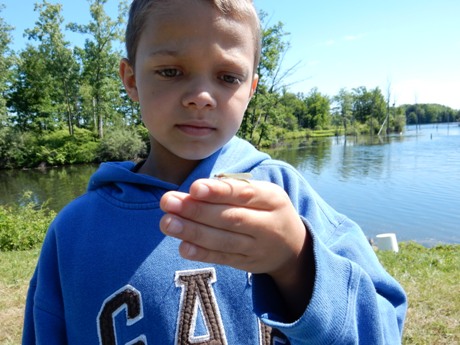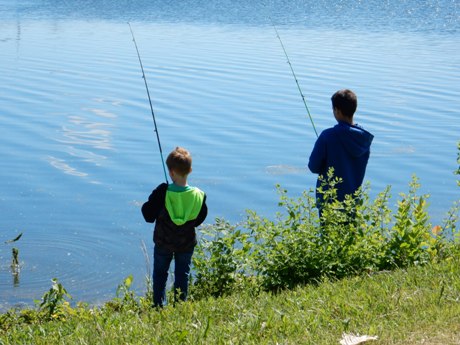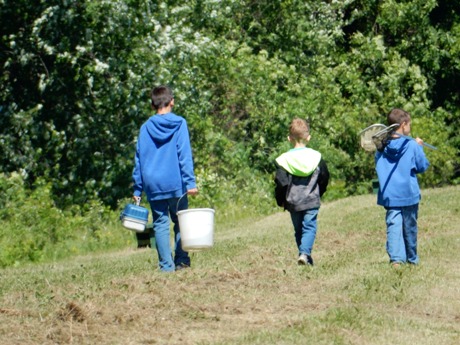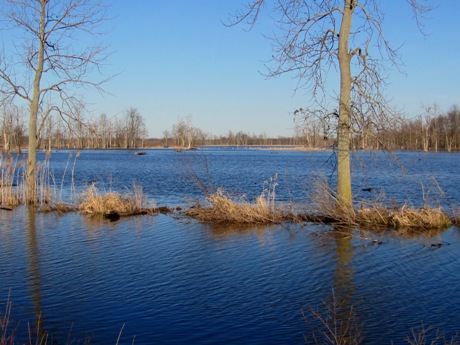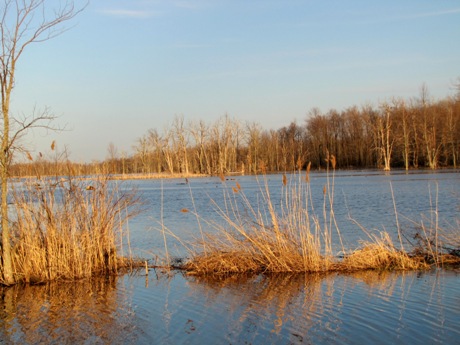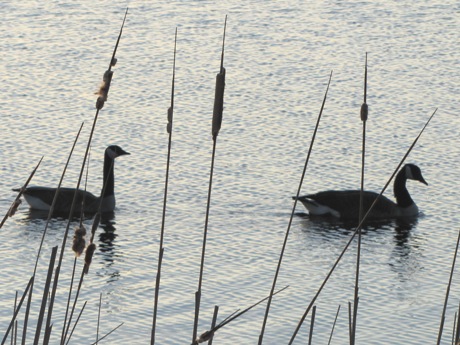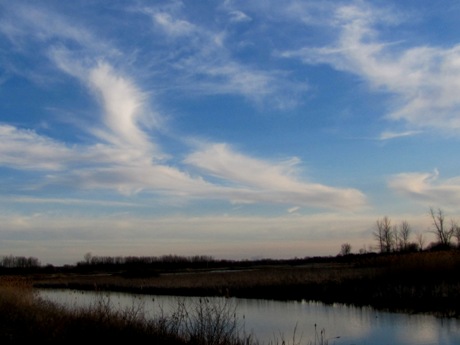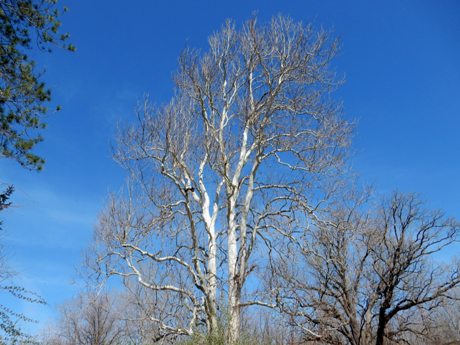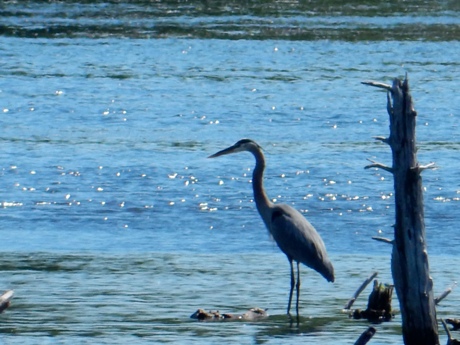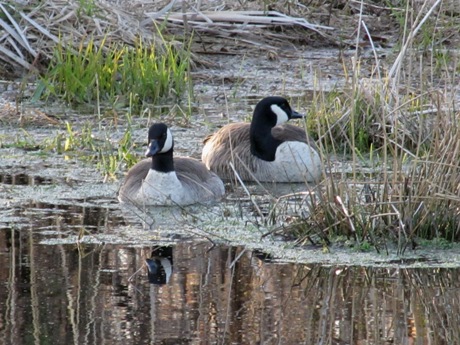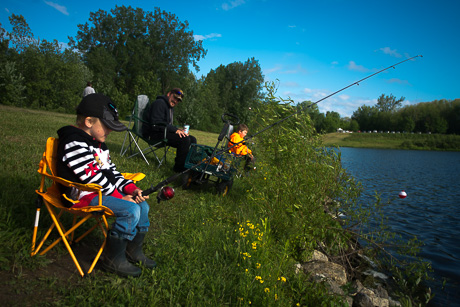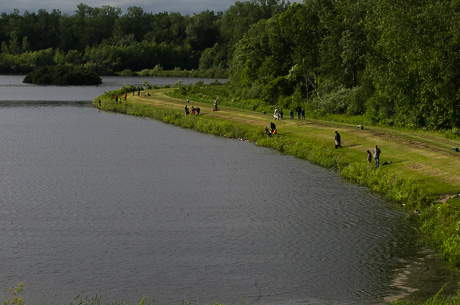At 4:38 p.m., Bill Schutt, Alabama fire's assistant chief, is reminded the sun sets in three minutes.
"That's what I'm worried about," he says. "It's not just light. It gets colder."
His chief is out on an island in the midst of frigid water with a hunter who became stranded in the swamps of Iroquois National Wildlife Refuge on a day when temperatures dipped into the teens. One firefighter, who was with the chief, is at risk of frostbite after his boots filled with water while trying to reach the hunter.
It's too risky for the firefighters to walk out, even though they've located the hunter and he's in good health.
The hunter called for help at 2:30 in the afternoon. He started hunting at 12:30. He called for help, he said later, having spent an hour in the icy waters of the swamp tracking a deer he'd shot.
"At first the water wasn't too deep," said Colin Phillips, here from Vermont to hunt. "I was hopping from island to island out there and then it started getting deeper and deeper and I'm breaking through the ice. Finally, I reached an island and went about 50 yards and I couldn't go any further. I was exhausted."
His hands were freezing because he didn't have any gloves, but was otherwise appropriately dressed for the conditions. It was so cold that after his gun got wet it jammed with ice. He couldn't even fire a shot to alert rescuers to his location.
He was found with the help of a State Police helicopter and good tracking by Alabama Chief Gary Patnode.
As sunset neared, a hovercraft from Clarence Center returned from its crew's effort to reach the stranded hunter and the two firefighters.
The sticks and logs popped nearly ever single floatation tube from around the boat.
One of the crew members said that when they were about halfway to the location, the boat's stern took a nosedive into the water and that's when most of the damage was done.
The crew decided to be safe and make its way back to the shore.
"We realized, it's just a machine," he said. "It can be repaired."
As the sun's light wanes outside the command center, Jim Bouton, a coordinator with the Office of Emergency Management, learns that the weather had cleared enough for the State Police helicopter to return to the scene.
The helicopter isn't really equipped to hoist people from the ground, so the plan is for the chopper to hover right on top of the ice and pull one person at a time into the craft.
Bouton relays the plan to Schutt and looks skeptical.
"We need a plan C," he says.
A little later, scene commanders learn the helicopter from the Erie County Sheriff's Office will attempt the rescue. The two-man crew can deploy a hoist.
"I'm usually the type to remain calm and I was confident enough in our resources and our fire companies that I knew we were eventually going to get out," Patnode said after he returned safely to Casey Road. "We were already working on plans B, C and D."
When the rescue effort first started, Schutt noted, it seemed straightforward enough. Dispatchers were able to provide coordinates of the stranded hunter and he wasn't too difficult to find.
But getting him out safely proved to be harder than expected.
"The amount of water they had to go through, lightly frozen over, was the problem the hunter ran into in the first place," Schutt said. "Our firefighters could not have safely gotten back because they would have had to walk back through the water."
Alabama firefighters have all recently been through wilderness rescue training and Patnode had Thompson carrying a backpack equipped with what rescuers would need in a wilderness situation.
Except for a kit to start a fire.
"If I could have started a fire, I would have," Patnode said.
The idea of a nighttime rescue in the wilderness certainly carried an innate sense of risk.
"Any time you have a helicopter operating in the dark close to trees and people, it's definitely an elevated level of danger," said Andy Merkle, who worked the scene during most of the incident as operations manager.
His job was to keep an track of all the people and resources going in so they could be accounted for coming out.
"We want to make sure we don't come up with any more victims," Merkle said.
The first person rescued was Ryan Thompson, the firefighter with the cold feet. He was fine and was out walking around after a few minutes of rehab in an ambulance.
Thompson expressed nothing but confidence in his chief and his fellow firefighters. He said he never felt like it was a desperate situation.
"I knew it was our job and they would get us out some how," Thompson said.
Phillips was the next one brought back to the command post on Casey Road.
Upon his return, the demeanor of his brother and a friend who had been pacing the road for more than two hours went from fretful to joyous.
"You go from being absolutely terrified to utter rejoicing in the matter of two hours," said friend Matthew Laflair.
Laflair had some familiarity with the swamp area and knew what firefighters were up against.
"I know how tough it is to get back there, so to see the effort is good," Laflair said. "It's impressive to see a helicopter pulling some people out of here."
Patnode was the third person airlifted out of the swamp. He was also impressed by the effort of the Erie County pilot.
"I think he went above and beyond," Patnode said. "Maybe he went out of his comfort zone doing a night rescue like that, but he got the job done."
There were two other members of the Alabama team who got stranded in the woods. They were brought out by members of the Clarence Center Fire Department who were dressed in cold-water rescue suits.
In all, volunteers from fire departments in Genesee, Orleans, Erie and Niagara counties assisted in the rescue of Phillips.
"I owe them my life," Phillps said. "If they didn't come out and get me, I'd be dead tonight. I appreciate every second of it. They're great people."
Patnode, Thompson, Schutt, all said, "this is what we do."
So what can we say about that?
"I think you say 'Thank you,' " Schutt said. "I don't know what more you can say than that.
"These guys are out here, no paycheck," Schutt added. "They've been out here in the cold for hours, but it's something you do for your community. When you're part of a volunteer fire department, somebody calls for help, you go help. It's not something you complain about. None of these guys are going to complain about being out here cold and away from home for hours."
The initial post on this incident by Billie Owens contains a lot of details in chronological order of how the rescue went down. If you haven't read it, read it.
Bill Schutt, communicating with dispatchers early in the incident.
Patnode, center of the picture, after being airlifted from the swamp.
Top photo, Colin Phillips escorted to an ambulance after being rescued.
To purchase prints of photos, click here.
